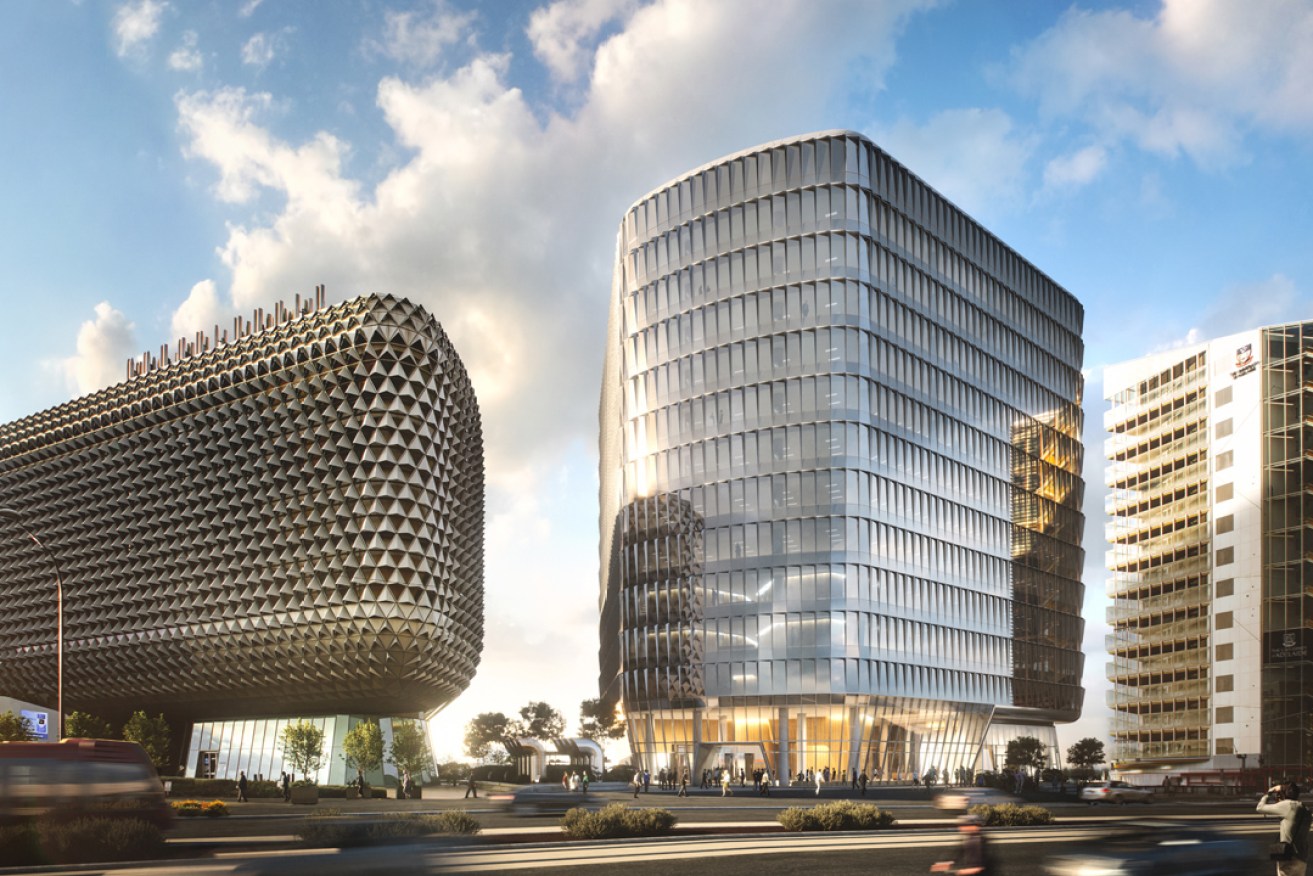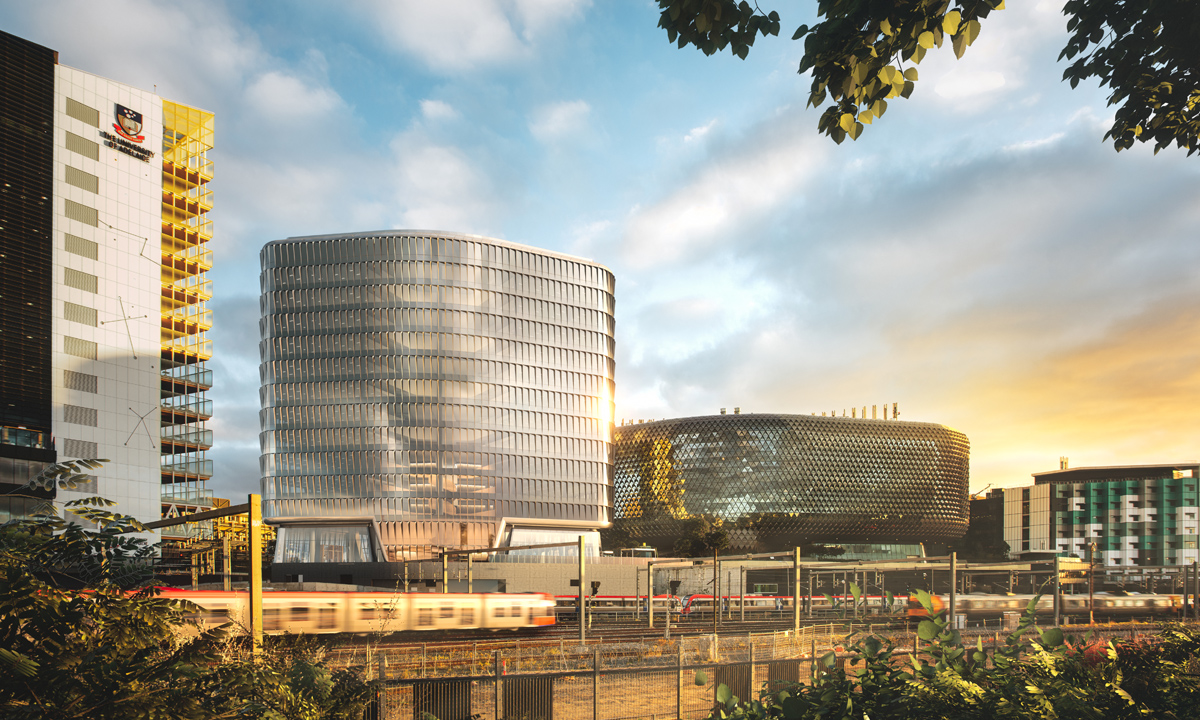Proton therapy focus of ‘SAHMRI 2’
Construction of the long-awaited SAHMRI 2 building on North Terrace will start next month, creating up to 1000 jobs.


The new scanner has been installed in the SA Medical and Health Research Institute, left, on North Terrace.
To be known as the Australian Bragg Centre, the $500 million project will be home to the first Proton Therapy Unit in Australia, delivering advanced precision radiation treatment.
However, the first cancer patients will not be treated at the facility until 2025, about 18 months after the building’s expected completion in late 2023.
The 12-storey building, including three levels underground, will be developed and owned by SA developer Commercial & General and built by Lendlease. The new building will also be designed by architects Woods Bagot, which won a swag of awards for its “cheese grater” SAHMRI design.
Commercial & General, which recently completed the $345 million Calvary Adelaide Hospital in Angas St, is providing almost $400 million in project finance and has worked in collaboration with SAHMRI to develop the business case.
The Federal Government is providing $68 million through a National Partnership Agreement.
The State Government, which will be a cornerstone tenant through SA Health, is chipping in $47.4 million, including a $10.6 million grant to assist in the planning and development phase and $36.8 million to relocate the Train Control Centre from North Terrace to Dry Creek, making the site ready for development.
The building will sit snugly between the original SAHMRI building, which opened in 2013, and the University of Adelaide’s Health & Medical Science Building that was opened in 2017.
The former Weatherill state government committed to building a second SAHMRI building in the Adelaide BioMed Precinct in 2017 when it announced it would provide a 99-year lease on the land and move the Train Operation Control Centre.
As well as hosting the Australian Bragg Centre for Proton Therapy & Research, the building is also expected to be home to the SAiGEN Cancer Institute, a new independent genomics and immunotherapy centre dedicated to cancer research.
It will also allow SAHMRI to expand its research capacity in artificial intelligence, machine learning, health analytics and will make another floor available for health, biomed and pharmaceutical industries to gain a footprint in Adelaide BioMed City.
When in full operation, it is estimated as many as 600-700 patients will be able to be treated at the facility each year – with around half of these expected to be children and young adults.

An artist’s render of the new SAHMRI building viewed from the Adelaide rail yards.
SAHMRI Executive Director Professor Steve Wesselingh said the Australian Bragg Centre would be built on the emerging technology of proton therapy.
“The building’s three underground levels are dedicated to a facility that will not only deliver life-saving treatment to cancer patients, in particular children, but will provide potential for research to unlock further benefits of this relatively new field and be a training ground for proton therapy specialists from throughout the Asia Pacific region and beyond,” he said.
“This building will also facilitate innovation spanning a range of fields including research and development, clinical trials and training.”
Commercial & General Executive Chair Jamie McClurg said this morning’s announcement was the culmination of four years of hard work by all those involved.
“Our health team has been forging strategic alliances with leading cancer centres around the world to ensure that the Australian Bragg Centre can be a beacon for sufferers and researchers,” he said.
“What we’ve been able to achieve through this innovative partnership between the private sector and Federal and State governments is on multi-institutional complex with a single aim – to attack cancer from every angle for the benefit of patients now and in the future.”
ProTom International will install its Radiance 330 proton therapy system at the centre, the same as is used at Massachusetts General Hospital in Boston.
President and CEO Stephen Spotts said ProTom was delighted to provide a key element of the new centre.
“The Radiance 330 will revolutionise cancer treatment not only in South Australia, or even Australia, but across the Asia-Pacific region,” he said.
Premier Steven Marshall said this project will further bolster the state’s international credentials and create significant economic stimulus and jobs in the wake of COVID-19.
“This significant development will put SA on the map as a pioneer in world-leading, lifesaving proton therapy cancer treatment,” he said.
“It will also provide the state’s building industry with significant economic stimulus as we emerge from the greatest economic challenge of our time, supporting as many as 1000 jobs and generating an estimated $1 billion in economic activity during the construction phase.
“We are pleased to support this project and look forward to it coming to fruition as a new, iconic landmark along North Terrace.”
The centre will take its name from pioneering South Australian scientists William and Lawrence Bragg, who shared the 1915 Nobel Prize for Physics, in recognition of their work on protons and x-ray.
Lawrence Bragg was born in Adelaide in the late 19th century when the family lived here, and attended St Peter’s College and Adelaide University.
Want to comment?
Send us an email, making it clear which story you’re commenting on and including your full name (required for publication) and phone number (only for verification purposes). Please put “Reader views” in the subject.
We’ll publish the best comments in a regular “Reader Views” post. Your comments can be brief, or we can accept up to 350 words, or thereabouts.




